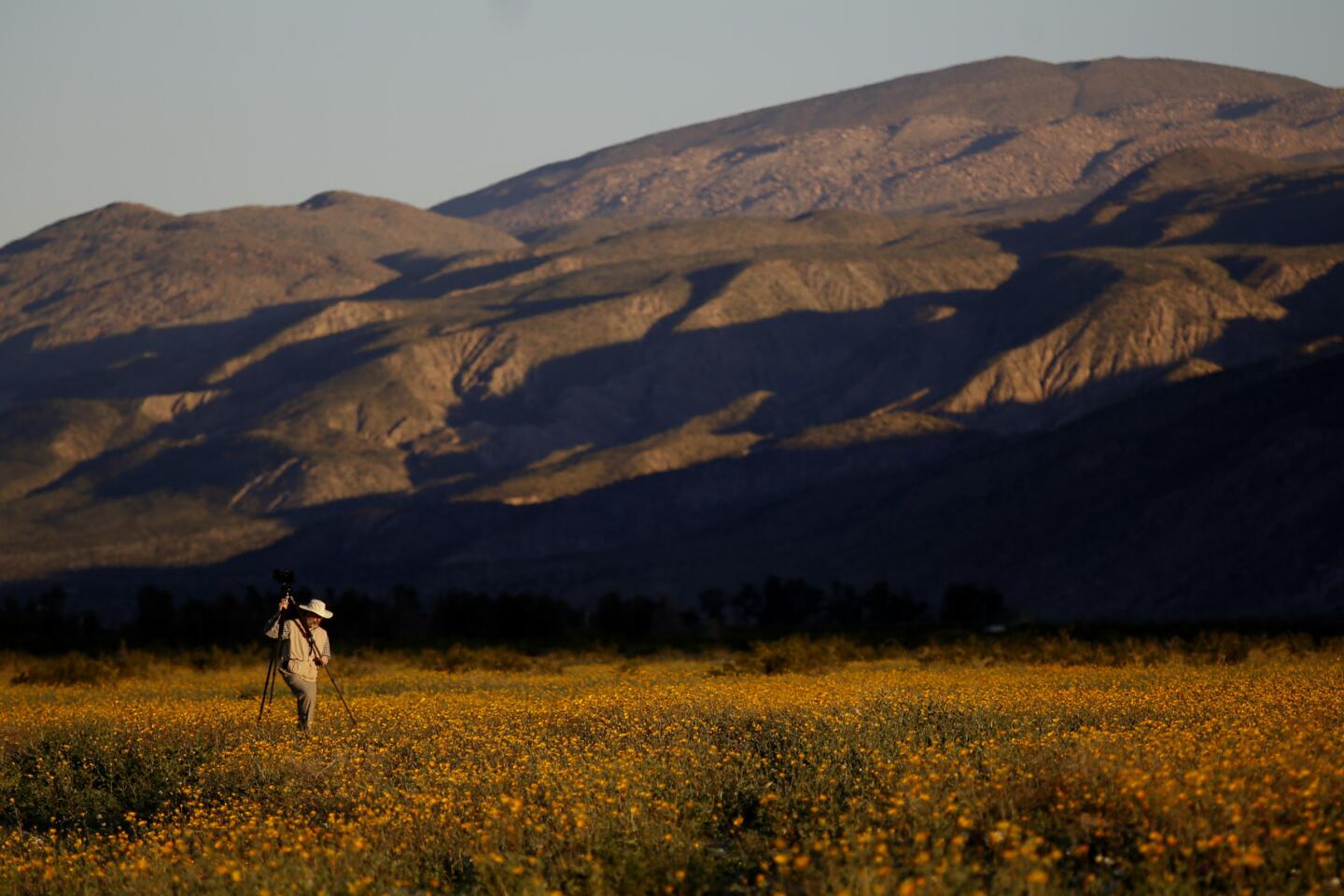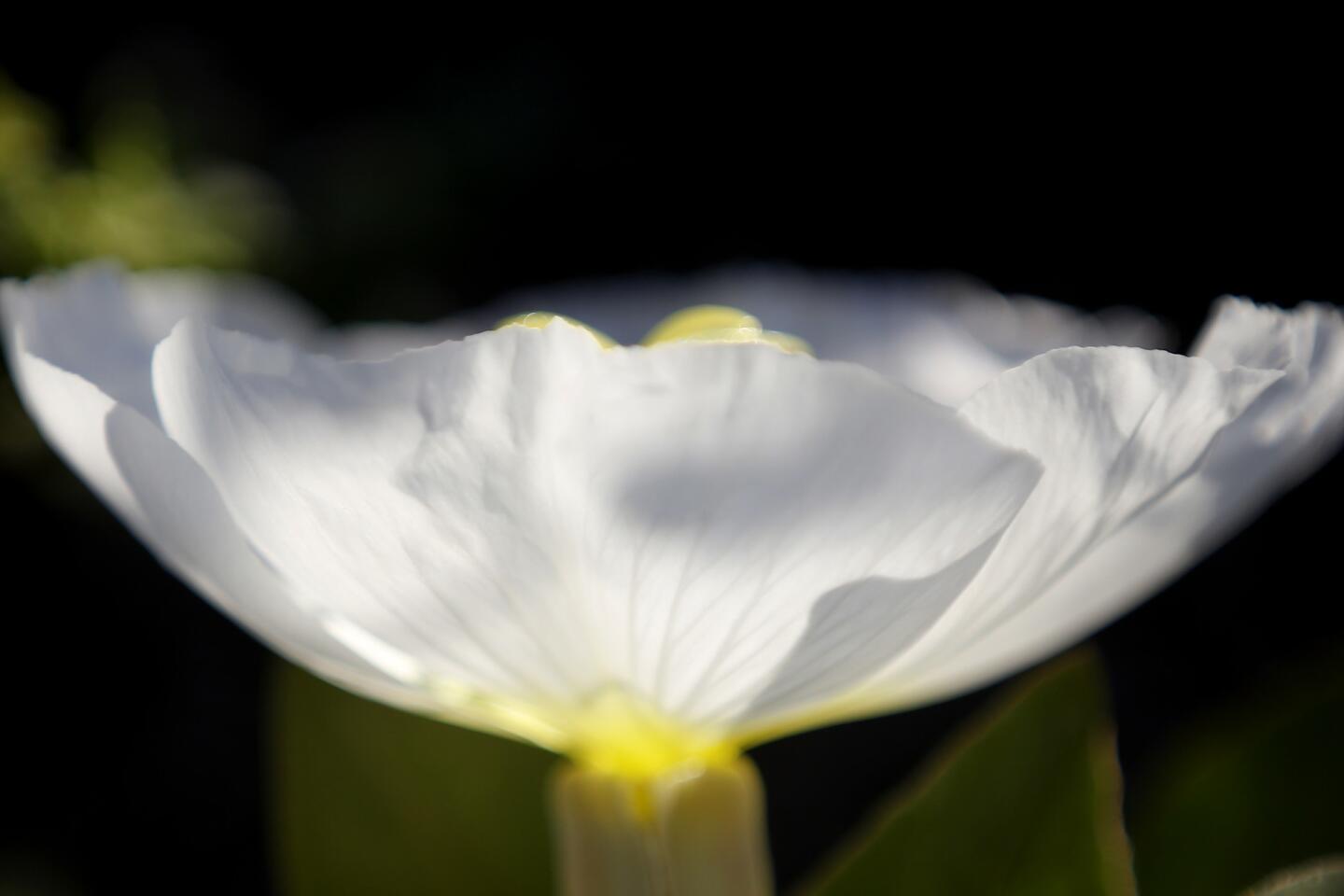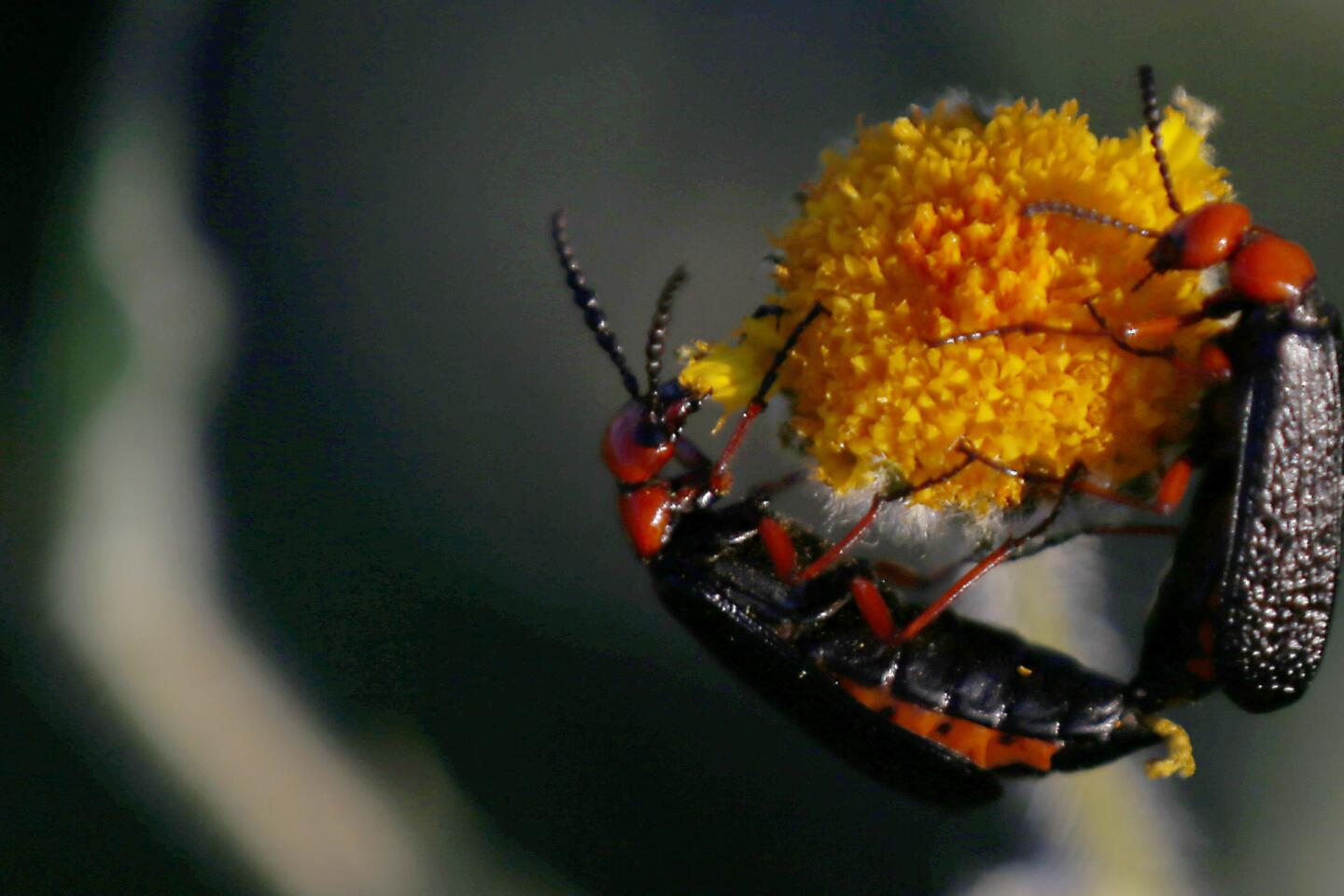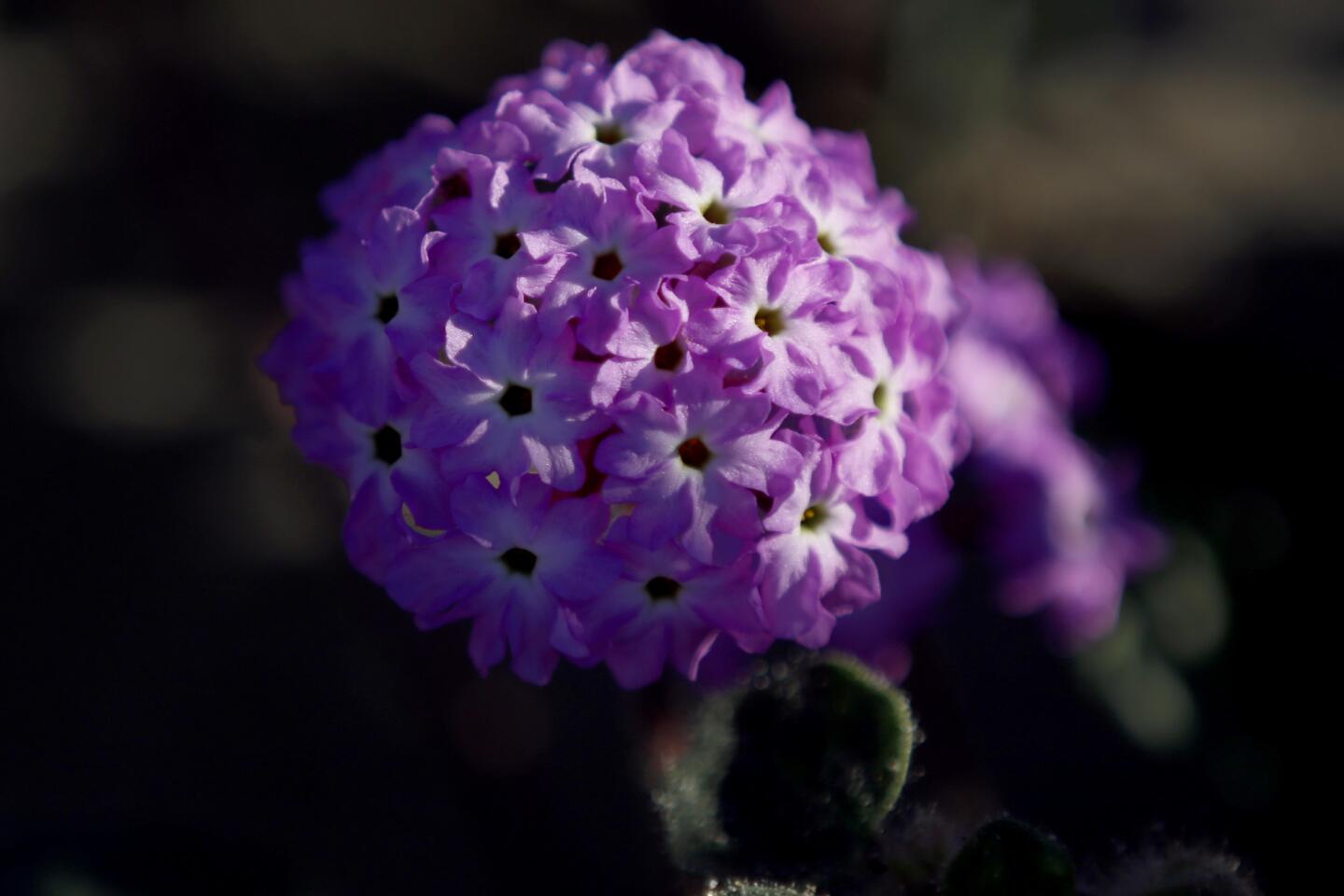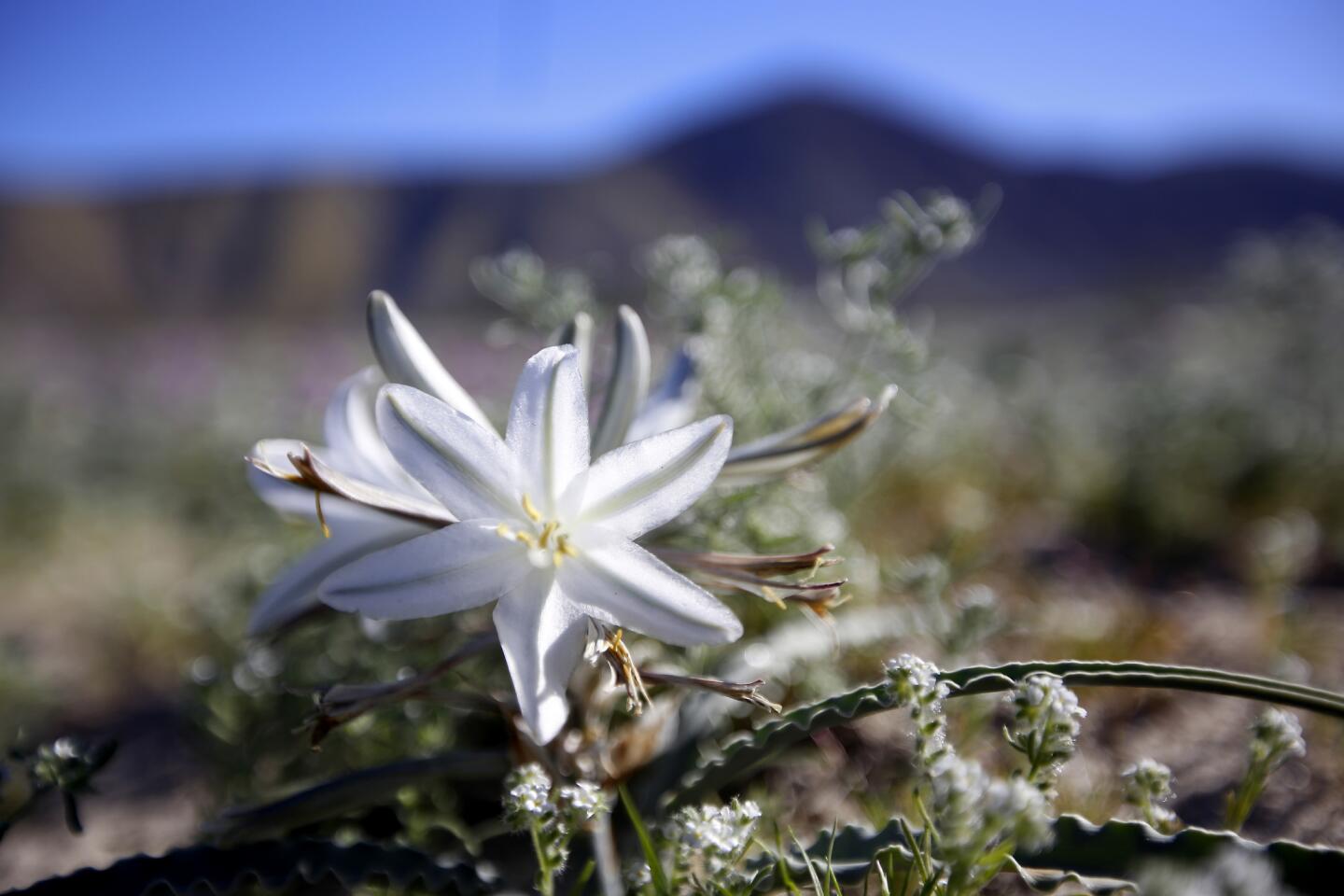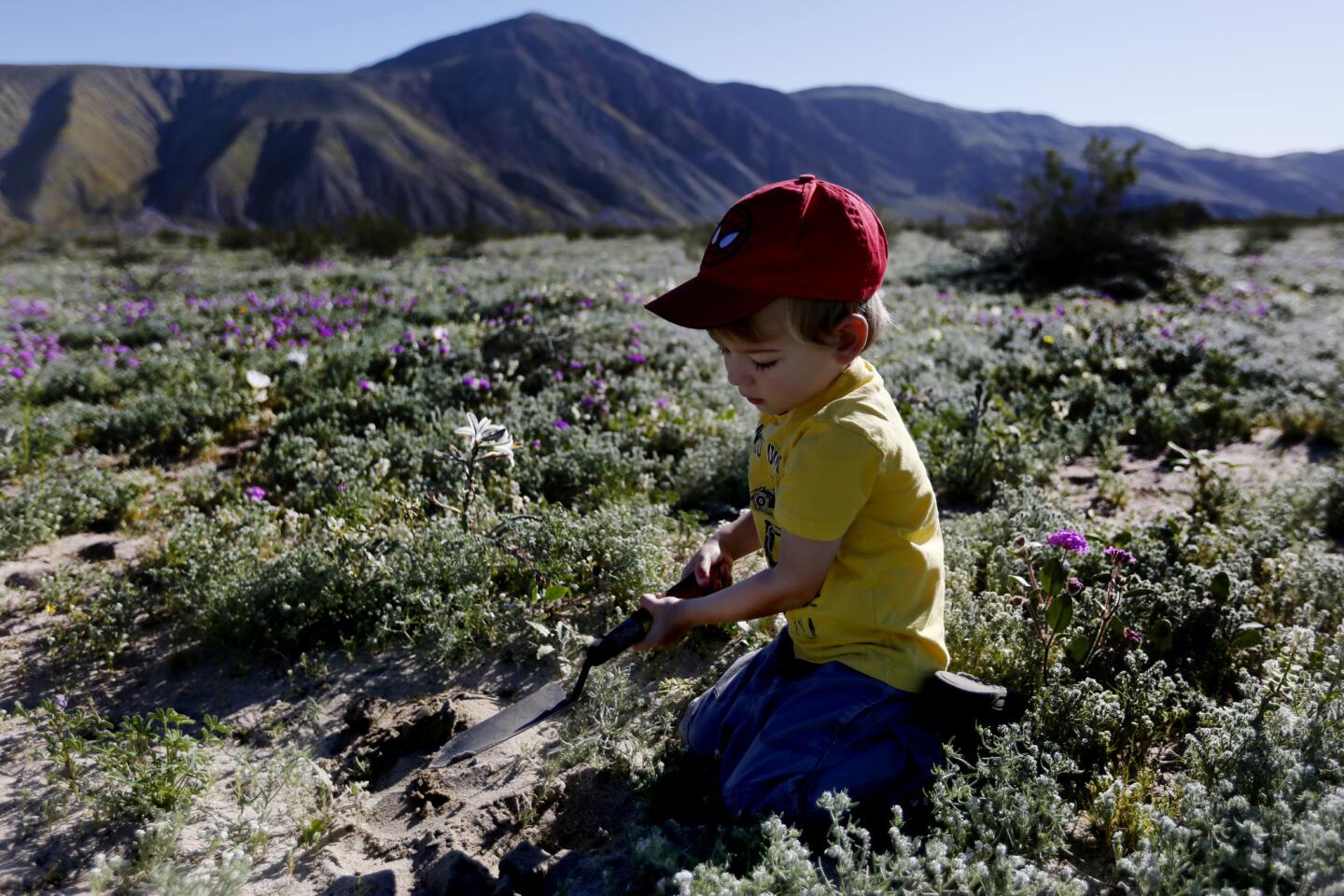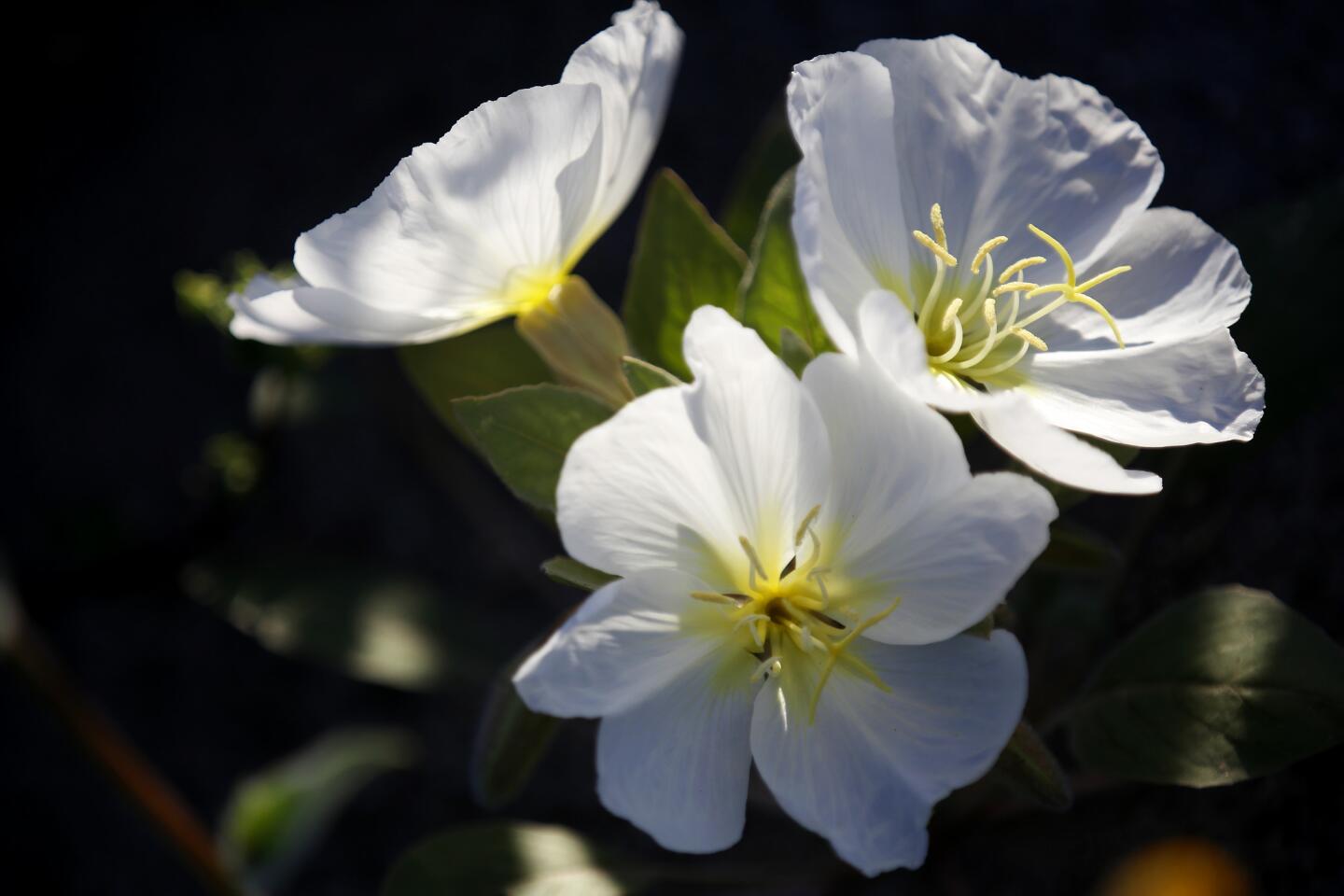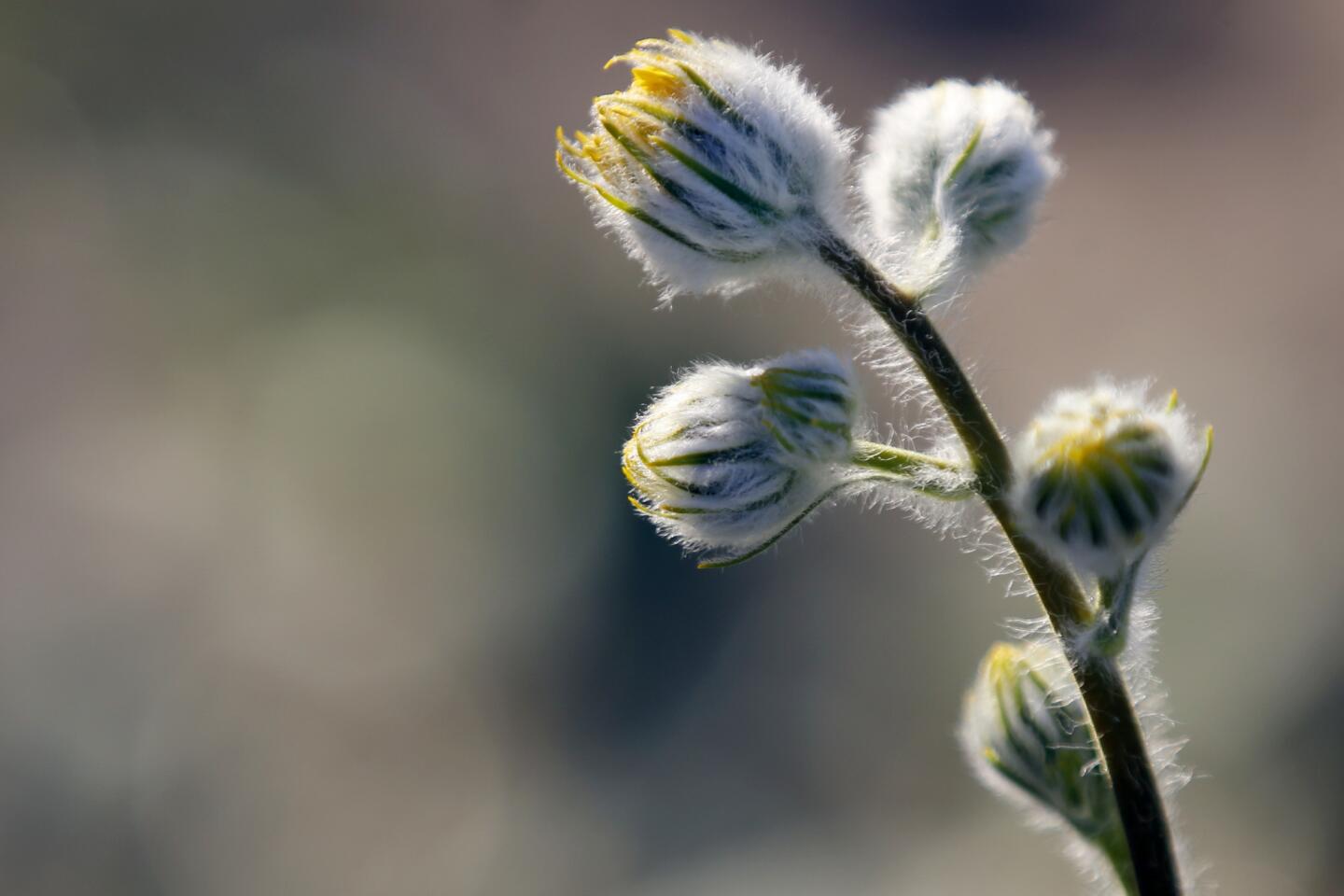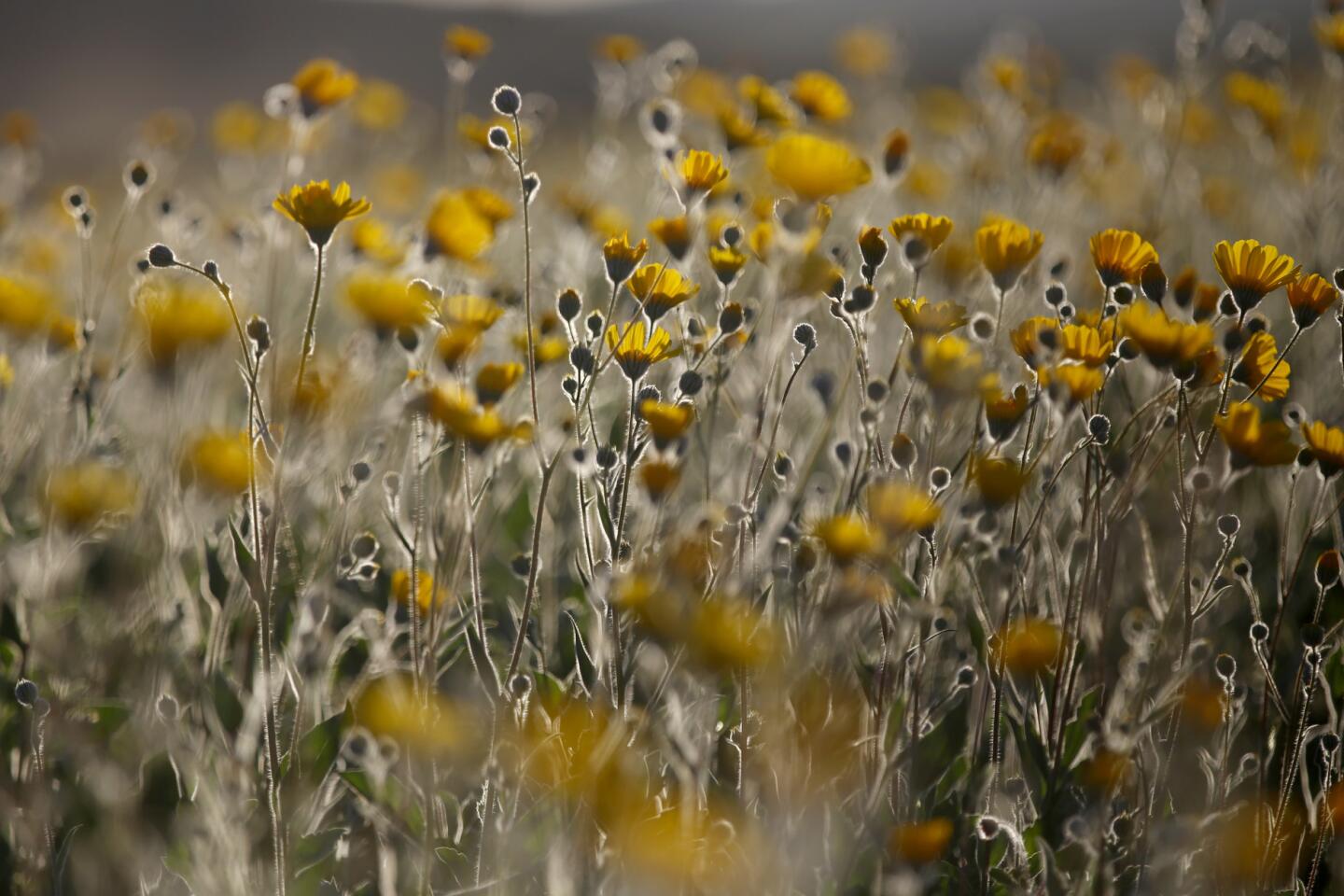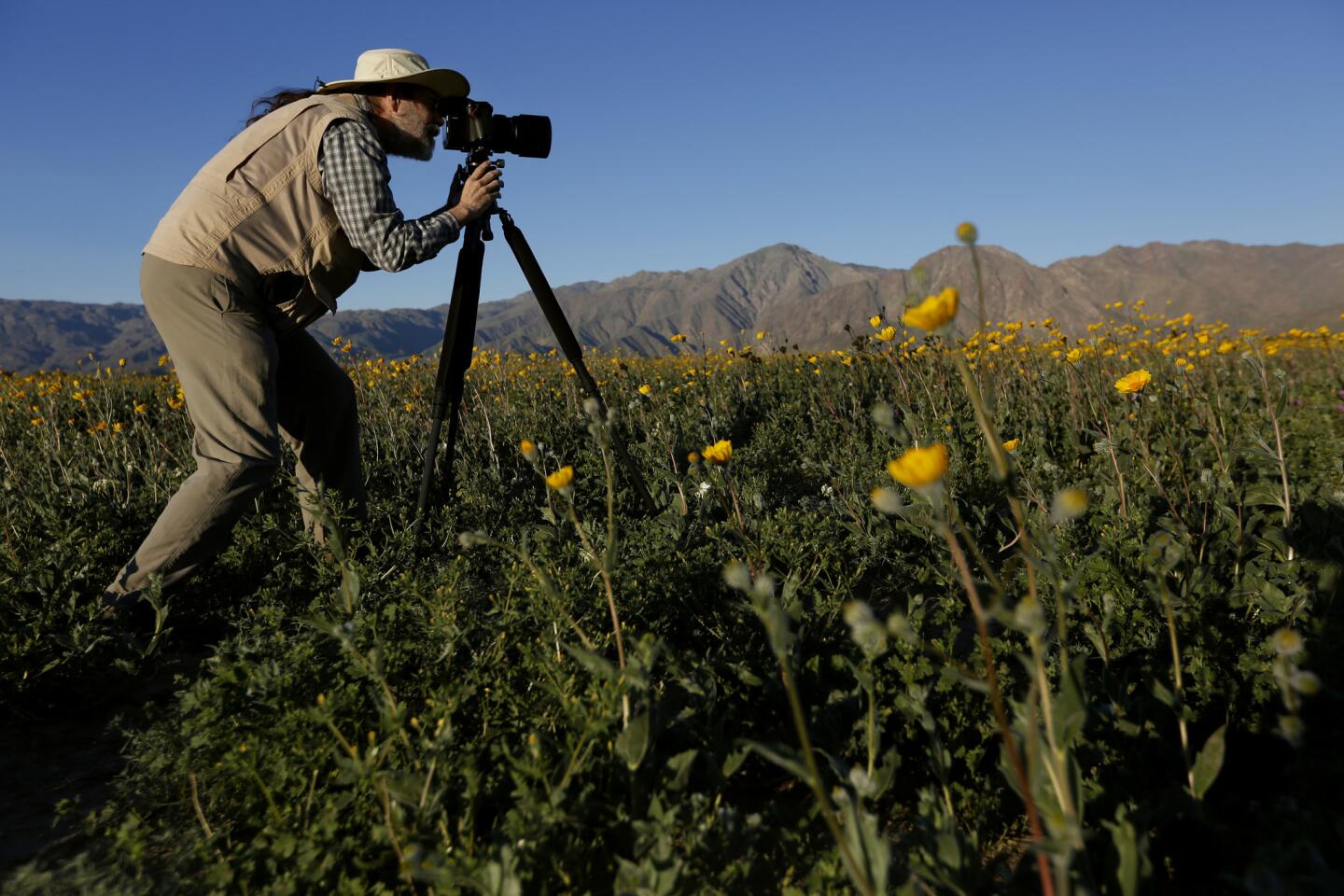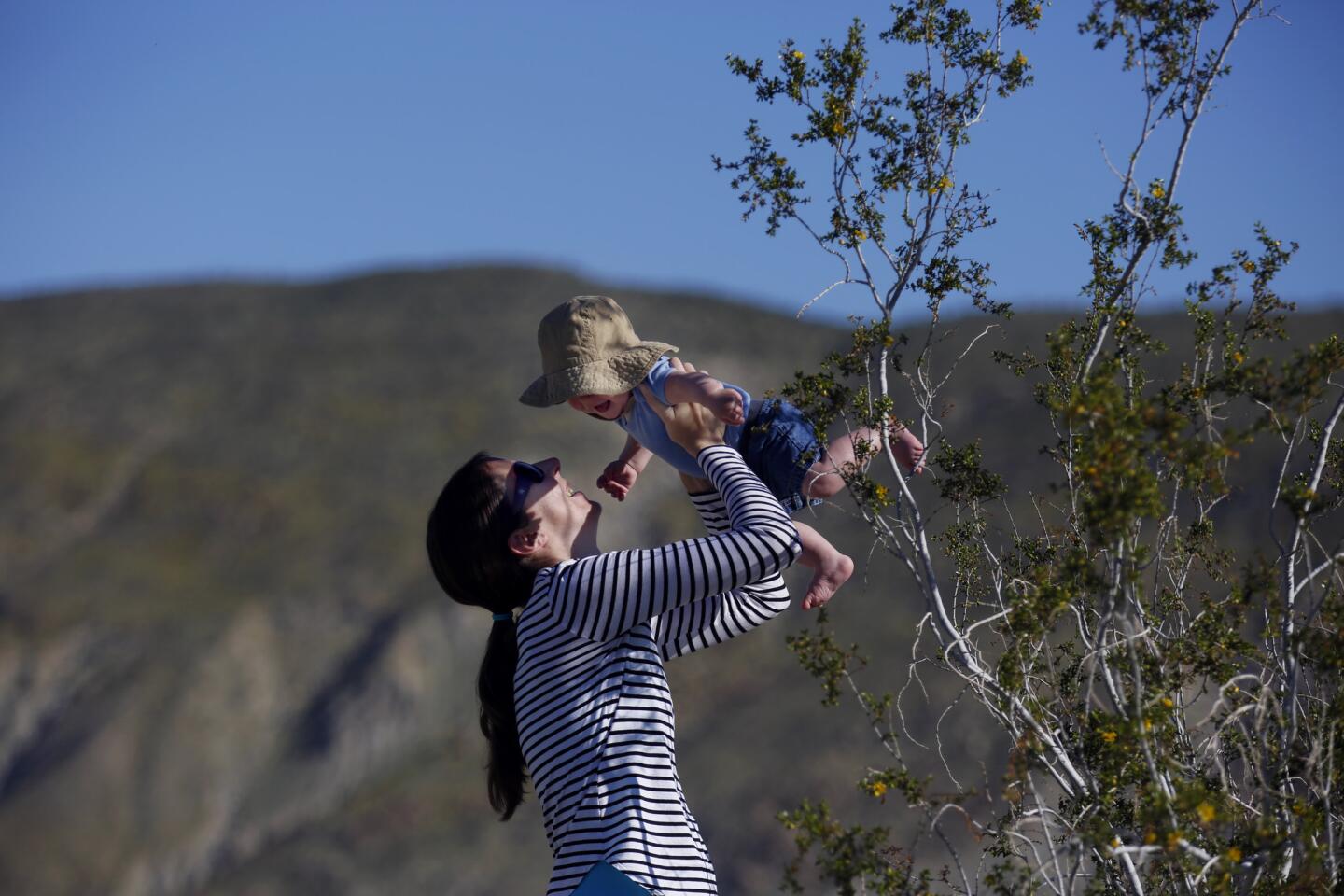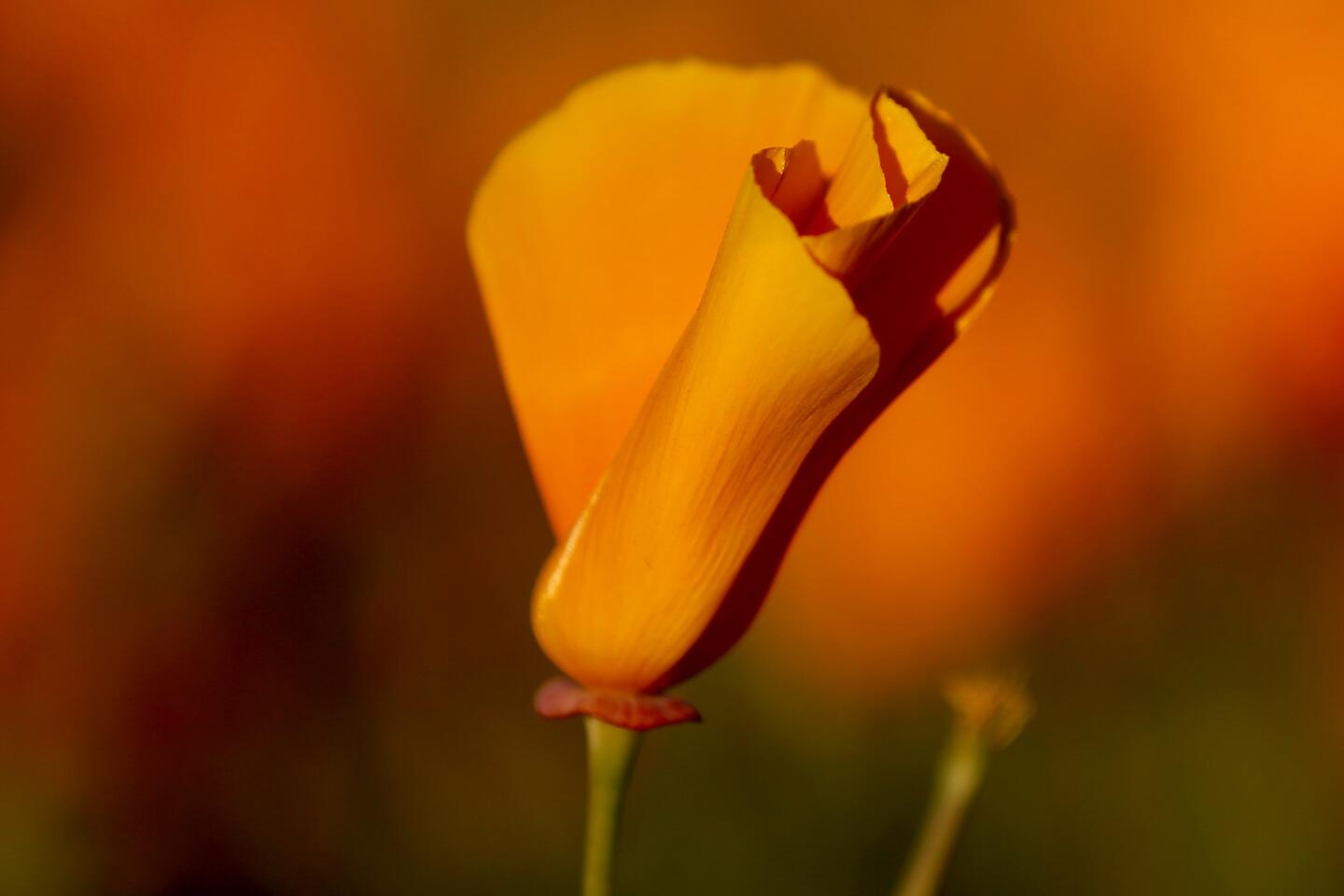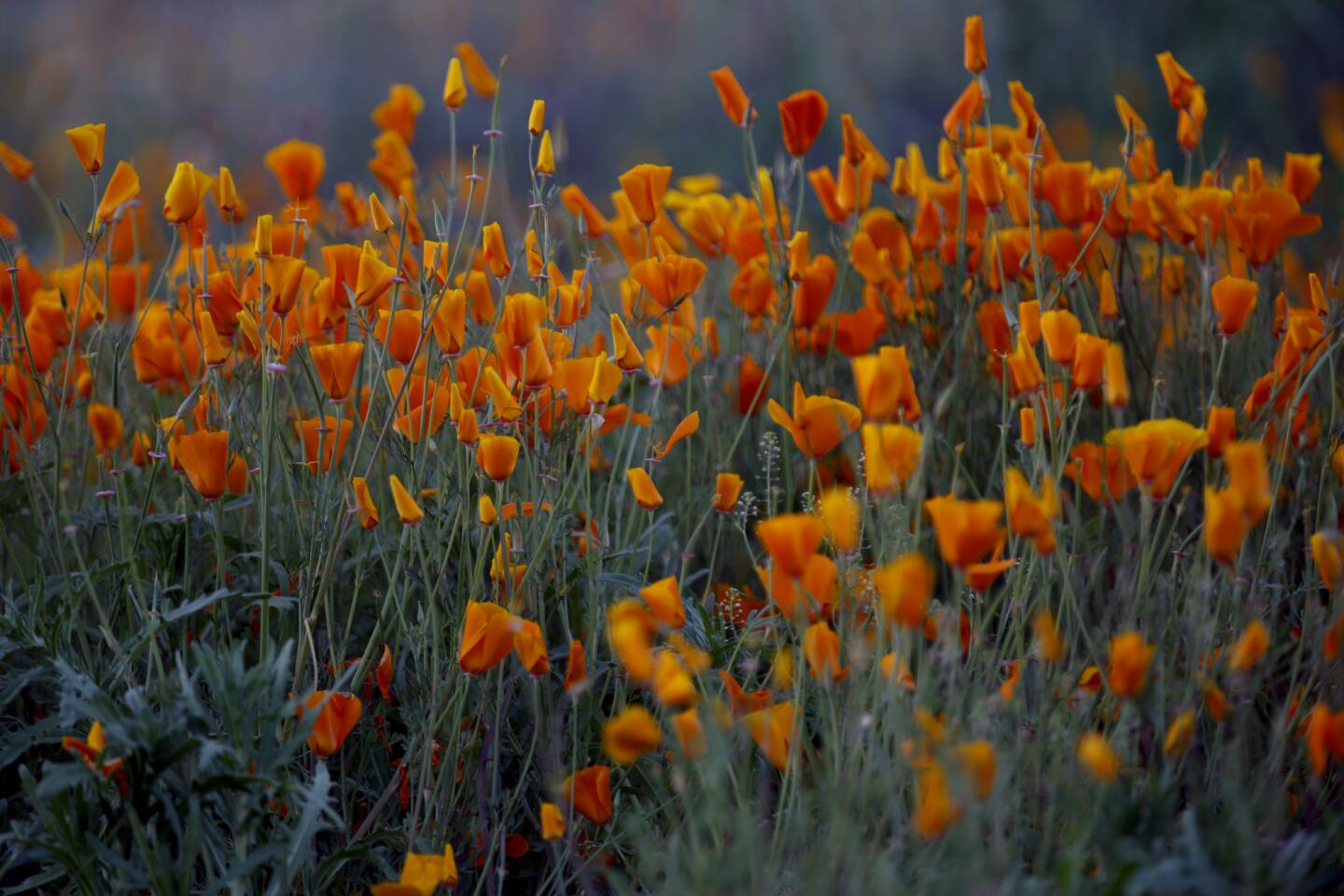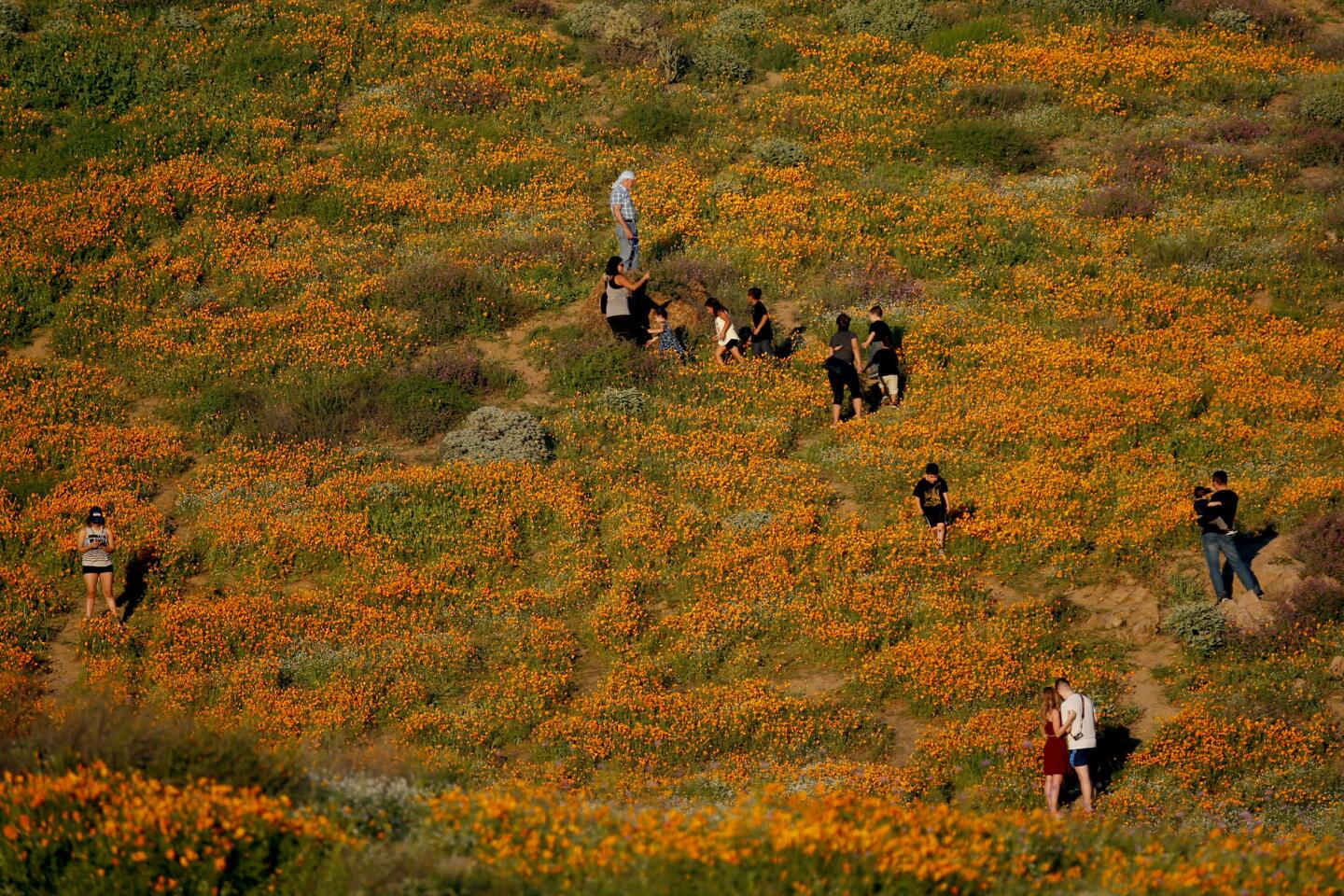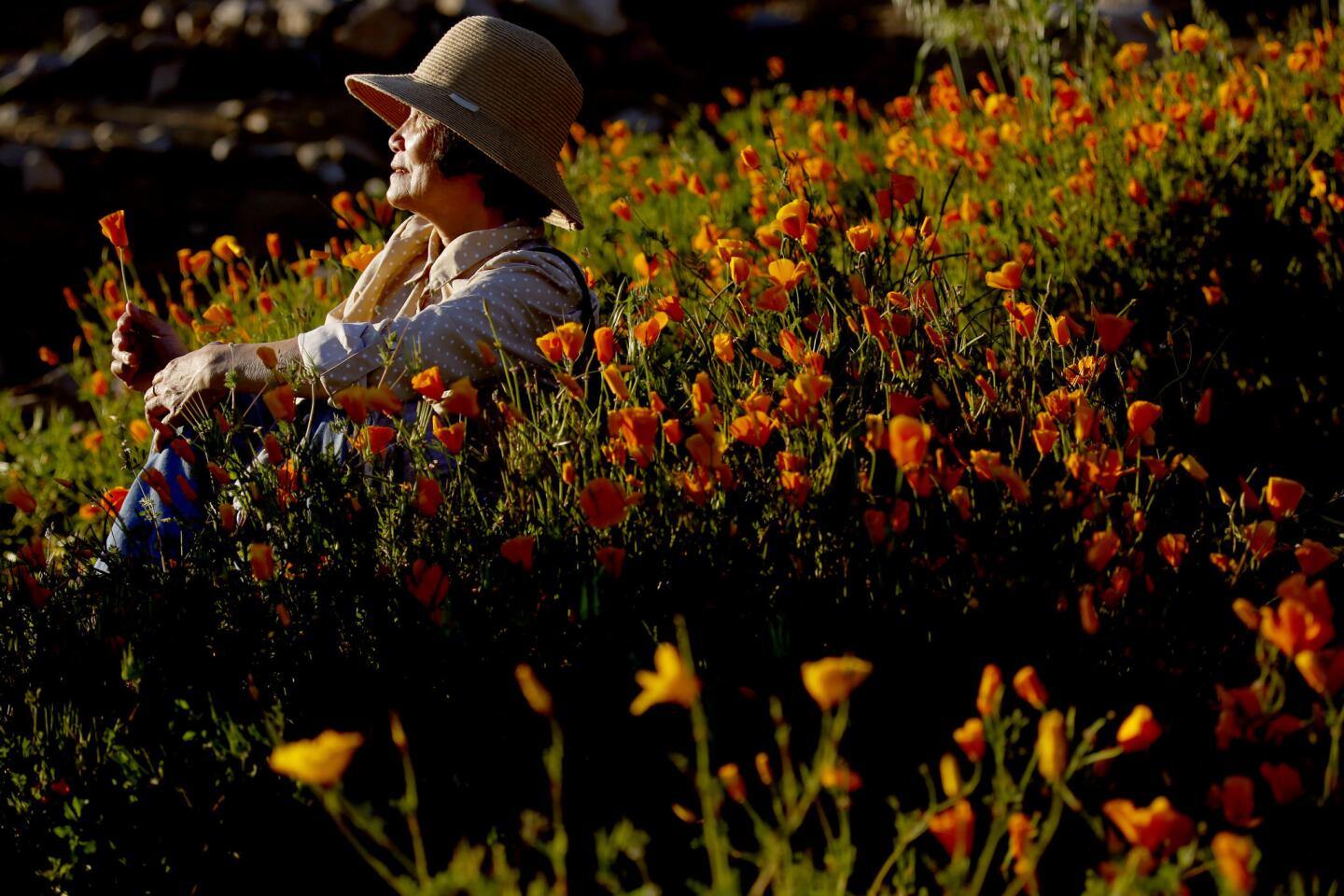The desert is in super bloom at Anza-Borrego state park
- Share via
Reporting from Anza-Borrego Desert State Park — Heather Slavey squinted as she stared into the badlands. She shook her head in awe of the natural montage — yellows, pinks, purples.
“Wow,” she said. “It looks like something out of the Wizard of Oz.”
Slavey, who does marketing for a law firm, and her husband, Robert, left their home in San Diego early Saturday morning, and drove toward Anza-Borrego Desert State Park. Like thousands of others across the Southland, they made the pilgrimage into the desert this weekend to witness a once-in-a-decade wildflower “super bloom” — the aftereffect of heavy winter rains.
“It has a chance to be the biggest in 20 years,” said botanist Jim Dice, who manages UC Irvine’s field research center in the park. “Right now is peak time.”
Since July 1, the start of the so-called rain year, the area has gotten more than seven inches of rain, Dice said, adding that — even with three months left to go — they’re well over the yearly average of five inches. It helped, too, that the area got gentle, even rains, he said, and not gully washers.
The university purchased the research center six years ago, and Dice said he’s seen many flowers for the first time this year, such as Bigelow’s monkey flower, sand blazing star and purple mat.
In the field off Henderson Canyon Road that Slavey had explored with her husband, state park Ranger Steve Bier led a wildlife tour Saturday morning.
He told the group of 30 or so gathered that if they looked closely, they could probably spot 20 different flowers. Yellow desert dandelions, purple sand verbenas and white desert lilies — the crowd favorite.
As the visitors snapped photos on their cellphones, Bier spotted a ground beetle. He crouched in the sand to get a closer look at the bug.

A wildflower ‘super bloom’ is attracting thousands.
“Now,” he said, in a booming voice, “I don’t know if this is John, Paul or Ringo.”
A few people in the crowd laughed. Bier smirked, pleased his joke had landed.
As the group walked toward the hills in the distance, a man shouted a question about the flowers: “How long will this all last?”
“It depends,” Bier said, “on the heat, the wind and these guys.”
He pointed at a black-and-green caterpillar, which before long would become a sphinx moth.
“They can decimate this whole field in no time,” Bier said, adding that he hadn’t seen as many this year as in some years past.
As the crew continued walking, Bier froze in his tracks, pointing to a leafy green weed with dull yellow flowers.
“This,” he said, “is the bane of our existence.”
He wrapped his hand around the invasive weed called Sahara mustard and yanked, pulling the plant’s thick, white root resembling a daikon radish from the soil.
In recent years, Bier told the crowd, the coarse weed had killed off tons of wildflowers by sucking up water and nutrients. So volunteers and the chamber of commerce teamed up in 2010, starting a task force to tackle the weed. Local groups often gather and pull any Sahara mustard they see — it’s helped, Bier said, but the weed is persistent.
For Borrego Springs — the tiny town surrounded by the park — the super bloom has created a bit of pandemonium.
JoAnn Maiter, a part-time employee of the Borrego Springs Chamber of Commerce, said she couldn’t remember how many phone calls she’d answered Friday. Dozens and dozens.
“We’re swamped. You can’t even get into our visitor’s center right now,” she said, adding that nearly 300 people had already signed into the visitor’s log by noon on Friday. “They’re coming from everywhere — absolutely everywhere: Canada, Minnesota, Chicago.”
Maiter said it was the biggest rush of people since at least 2008, when another round of evenly dispersed rains brought a desert floor blanketed with flowers.
And Saturday was even crazier.
Bier, the park ranger, said that by 6:30 a.m., hundreds of people had already gathered in the park looking for tips on where to find the best fields. Down the road, the Oasis Inn Borrego had a big sign on the front door: “SORRY NO VACANCY.”
And by 10 a.m. — as nearly everyone’s T-shirt had soaked through with sweat in the 92-degree heat — the line of cars snaking down the hill toward the park stretched for miles. One family with Utah plates gave up a couple miles from the visitor’s center, setting up a blanket in the shade of their SUV and eating crackers and ham sandwiches. They pointed at the pattern on their blanket — tiny flowers — and joked it was better than nothing.
The San Diego County Sheriff’s Office issued a news alert Sunday asking people to consider visiting the bloom on weekdays. The crush of people racing to visit the park was causing hours-long traffic delays, in part because some travelers were stopping in the middle of roadways to look at the bloom, the alert said.
To Ana Garcia, who drove to the park from Escondido with her friends Saturday morning, the flowers were a bit underwhelming.
“I was hoping to see purple waves,” she said. “Not dots of yellow.”
“Yeah,” her friend added. “This isn’t what it looked like on social media.”
Garcia shrugged. “Still cool,” she said.
To read the article in Spanish, click here
ALSO
California is having its best wildflower season in decades, but time is running out to see it
SoCal wildflowers get the star treatment, thanks to actor Joe Spano. Just listen.
Joshua Tree’s wildflowers are just starting to bloom. Here are tours that will take you there
More to Read
Sign up for Essential California
The most important California stories and recommendations in your inbox every morning.
You may occasionally receive promotional content from the Los Angeles Times.
